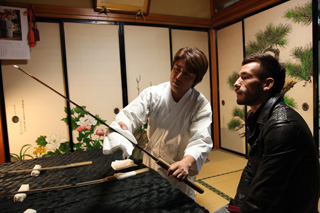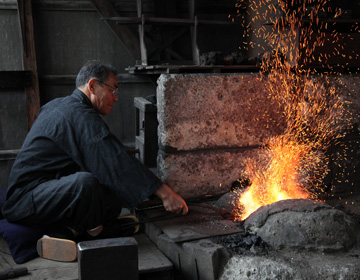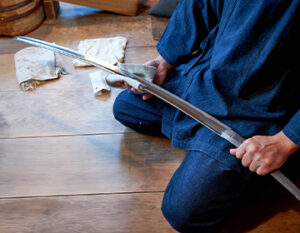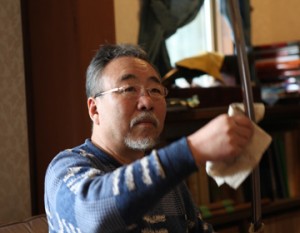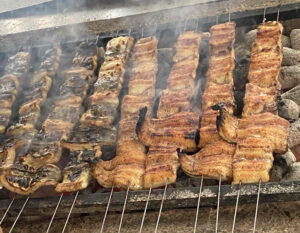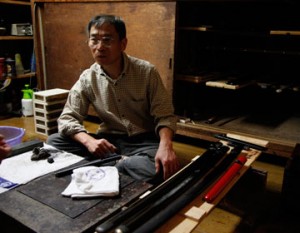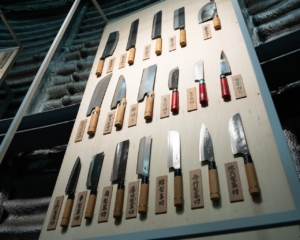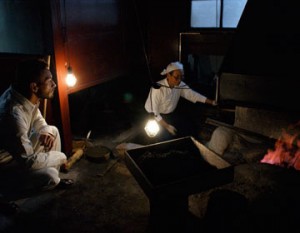Yamato Tradition, swords revived by Masamune Date
There are several swordsmiths still existing all over Japan, and in Miyagi, there is a workshop that creates Japanese swords according to the old tradition. We visited the workshop of Hokke Saburo Nobufusa who creates swords in the Hosho School of Yamato Tradition method. The swords of Yamato Tradition have a wide and high ”shinogi”, and the blades have beautiful and fine ”masame-hada”
Yamato Tradition is a classification of old Japanese swords. The method was originally established in Yamatono-kuni Takaichi-gun (Nara Prefecture) at the end of the Kamakura period. Although it declined at one time, the Sendai Clan revived it in times of Lord Masamune Date. At the time, the first generation of Hokke, Kiyofusa, went to study sword making with a prominent swordsmith called Kunikane and inherited the Yamato Tradition.
The revival of the Yamato tradition
After a while, the method of Hokke changed to another method called Bizen Tradition during the reign of the fifth generation Hokke. However, the eighth generation Hokke studied and revived the Yamato Tradition. He was recognized as a true heir of Hosho School of Yamato Tradition, and was designated as a Tangible Important Cultural Property of Miyagi Prefecture. When we visited the workshop, Daiki Takahashi, the ninth generation of Hokke Saburo Nobufusa, was in the middle of forging a sword.
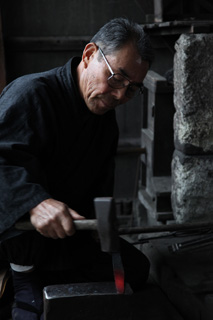
Culture born from the rich iron sand and forest of Japan
Daiki’s son, Eiki is also working as a swordsmith. On our visit, Eiki explained to us about the swords. His first words were ”iron does not exist without humans.” In nature, iron does not exist in the form of pure iron. Iron exists in many different forms. Sand iron, for example, must be treated for it to become the substance we call ”iron”. Using sand iron and coal, iron must be refined. Japan is rich in sand iron and coal. People treated it to create iron. Iron was turned into swords, a symbol of Japanese culture. Japanese sword is a culture of its own that is closely related to the everyday life of Japanese people. ”Swords existed closely to people’s lives.” said Eiki. ”People possessed short swords not only for self-defense but as a charm to protect themselves. There are many idioms and proverbs in the Japanese language that use sword terminology. That shows how close the swords were to people’s lives.”
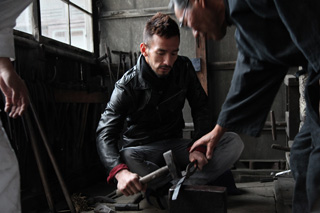
A sword made of “iron meteorite” that came from outer space.
As previously mentioned, iron is made by man, but short swords existed in Egypt and the Chinese Dynasty when iron manufacturing was not yet established. How were these made?
”They used material from outer space.” said Eiki. It is believed that they used iron meteorites.
Daiki and Eiki have forged a Japanese sword using only iron meteorites, on commission from a museum. We were given a special viewing of the sword and iron meteorites. It took the iron an incredible one million years to cool in outer space, so the metal composition was completely different from the iron on earth. It also could not be forged repeatedly. After multiple attempts over a period of two years, they were finally able to make a sword.
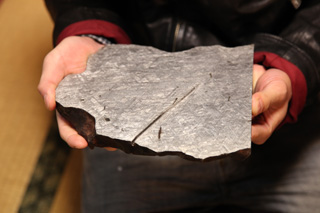
They will last one thousand years
Swords were first made as items to be used in rituals or as a symbol. At the end of the Heian period, swords became an important weapon as the ”samurai” gained power. It became essential to be able to evaluate swords. After a while, swords were not only used as weapons, they also became spiritual symbols of ”samurai”. It was important to develop methods to create better swords, but it was also important for appraisal methods to be developed.
In the Kamakura period, when ”samurai” had gained power, appraisal standards were established, and one could look at a sword and tell who created it and where.
”As a result, there is no compromise when we forge or when we appraise, because swords will remain for the next one thousand years.” Even though times change, the unwavering beauty and refined shape will remain as they are. We felt the weight of history in Daiki’s words.
